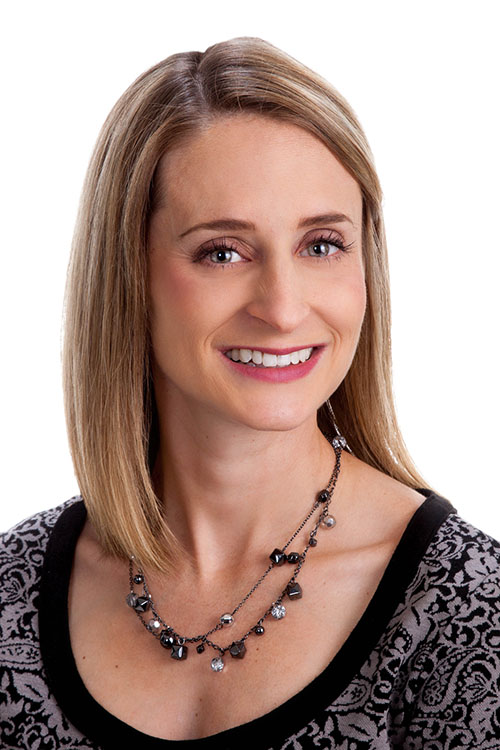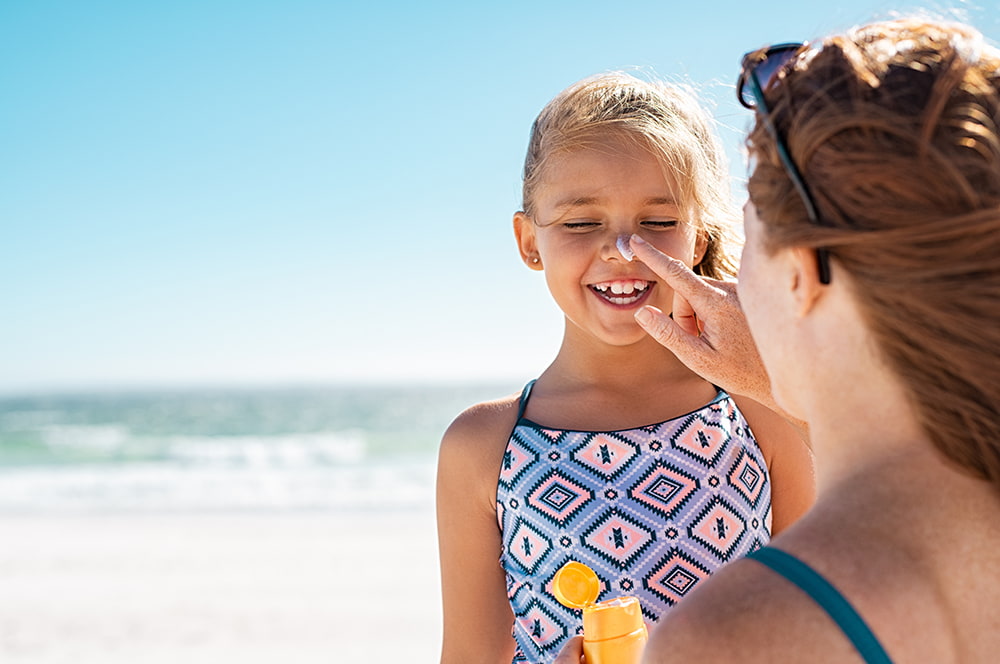My husband and I have four children, all ages six and younger (that’s what happens when you go to medical school). Right now, their favorite movie is “The Greatest Showman” starring Hugh Jackman. He is famous in the entertainment industry for his singing, dancing and acting abilities, along with his devilishly handsome good looks.
However, he’s also famous in the dermatology world as he has publicly battled basal cell carcinoma not once, but five times in the past including a recurrent basal cell carcinoma on his nose. Hugh posted pictures on Instagram with the hashtag #wearsunscreen to help raise public awareness and encourage good sun protection behavior.
Most Common Type of Skin Cancer
Basal cell carcinoma is the most common form of skin cancer. In fact, it’s the most common cancer overall. It develops after repeated sun damage over time. You might notice it as a pink scaly patch. Or, it might be a raised pearly bump, almost pimple-like that never seems to go away. Sometimes basal cell carcinoma will bleed after minor trauma or for no reason at all.
Second Most Common Skin Cancer
Are there other types of skin cancer? You bet! The second most common form of skin cancer is squamous cell carcinoma. This type of skin cancer may appear as a growing lump, often with a rough surface. But, it also could be a flat, reddish patch that grows slowly and may be tender. Sometimes these grow quickly on the skin in a volcano-like fashion. Squamous cell carcinoma can be serious in some cases and spread beyond the skin to lymph nodes if not treated properly or within a reasonable amount of time.
Most Well-Known Skin Cancer
Finally, the skin cancer with which most people are familiar, is melanoma. Melanoma can be a life-threatening skin cancer, especially if not caught early. The warning signs for melanoma are summed up in the “ABCDE” algorithm.
- A = asymmetry (one half doesn’t look like the other)
- B = border (irregular, ill-defined or funny-looking shape)
- C = color (one spot that has multiple colors within it, such as different shades of brown or black. Red, white or blue colors are occasionally seen in melanoma)
- D = diameter (a majority of melanomas are greater than 6mm when diagnosed, which is the size of a pencil eraser; however this doesn’t mean that smaller spots aren’t worrisome)
- E = evolving (a mole that is changing in size, shape or color)
Ways to Protect Yourself and Your Family
So, what can you do to reduce your risk for skin cancer? Protect yourself! Make sun protection a priority, not only for yourself but for your family. If you have children, make it your goal to not let them burn. Like never. Never ever.
Here are some tips I use with my own family:
- Everyone needs sunscreen when outside. This includes just playing outside, going to the pool, going on walks, whatever it may be. The two types of sunscreen available are:
- Chemical sunscreens: (the active ingredients are long words that are hard to pronounce, such as oxybenzone)
- Physical sunscreens: (the active ingredients are zinc and/or titanium, easy to pronounce)
I prefer zinc/titanium-based sunscreens because they stay on better, cause less skin sensitivity issues and are better at preventing sunburn in my opinion. Examples of this type of sunscreen include Neutrogena Sheer Zinc SPF 50 or CeraVe Hydrating Sunscreen SPF 50. Overall, any sunscreen is better than none. And don’t forget, it needs to be reapplied every 2-3 hours.
- Make hats your friend. Put them by the door you use most often to go outside. Put one in your car. I don’t know HOW many times a patient has told me, “I didn’t plan on being outside that long!” Never travel without a hat!
- Buy rash guard swim shirts or other sun protective clothing for yourself and your family. Yep, I make my kids wear long-sleeve swim shirts to the pool. Sorry kids, but you’ll thank me later. SPF 50+ clothing is available for swimmers, golfers, fishermen, etc., at local stores such as Scheels but also on well-known websites such as www.coolibar.com. Trust me, it’s worth the money to invest in good sun-protective clothing.
- Put on a layer of sunscreen to your face and neck every morning. Use it before applying makeup. There are some really nice, light sunscreens available over the counter. My most recent favorites for this purpose are Neutrogena Sensitive Skin Face Liquid Sunscreen SPF 50 or La Roche-Posay Anthelios Ultra-Light Tinted Mineral Sunscreen SPF 50.
- Finally, come see me! If you are worried, questioning a spot on your skin or just want a once-over, you should visit me at South Lincoln Dermatology or see a board-certified dermatologist in your area.

Gina Weir, MD
Dr. Weir is a dermatologist with South Lincoln Dermatology.
2625 Stockwell
Lincoln, NE 68502
402-421-3335








